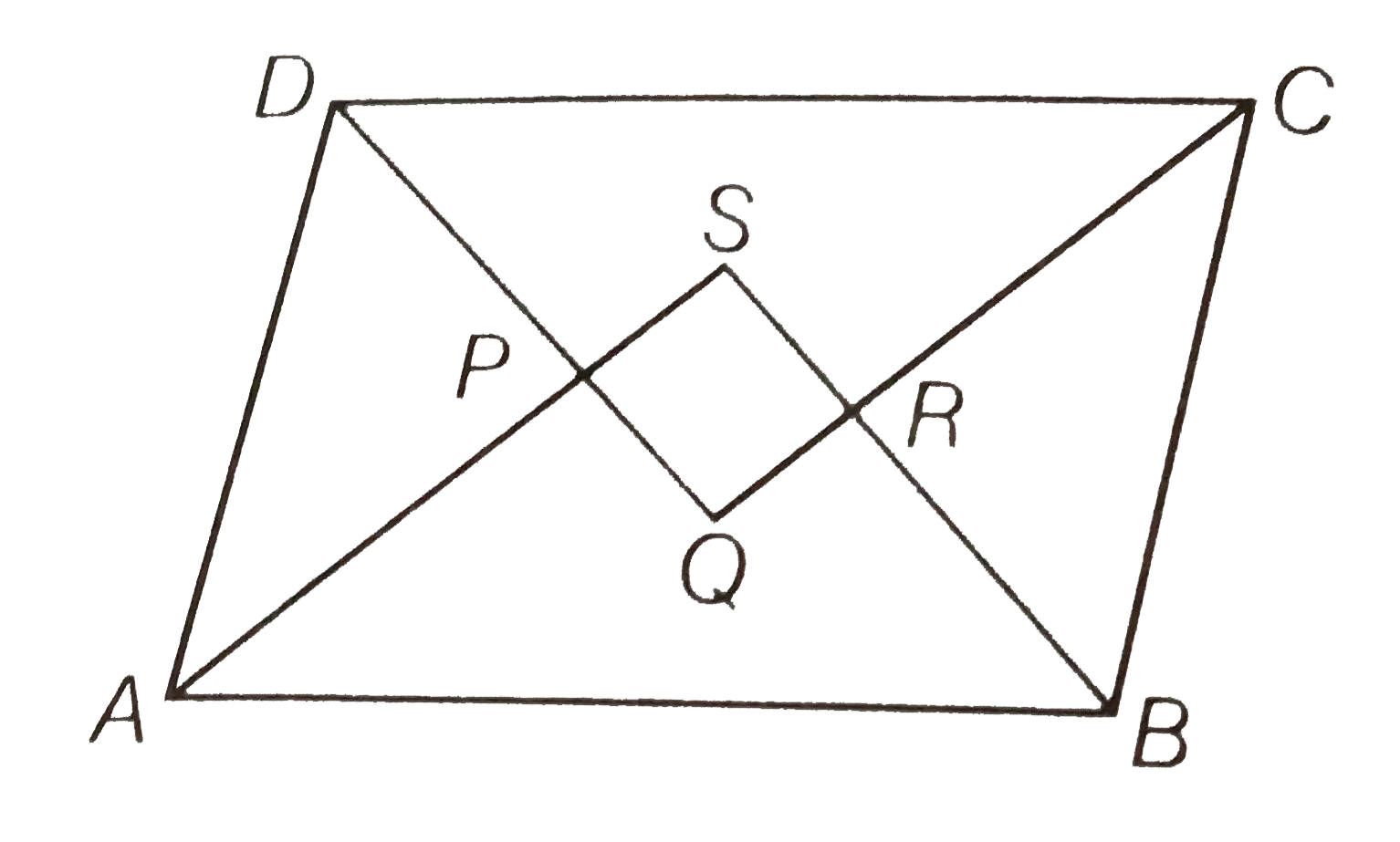The bisectors of angles of a parallelogram forms a
Trapezium
Rectangle
Rhombus
Kite
The correct Answer is:B
To solve the problem of determining what shape is formed by the angle bisectors of a parallelogram, we can follow these steps:
1. Understand the Properties of a Parallelogram:
- A parallelogram has opposite angles that are equal and consecutive angles that are supplementary.
- Let’s denote the angles of the parallelogram ABCD as follows: ∠A = 2x, ∠B = 2y, ∠C = 2x, and ∠D = 2y.
Hint: Remember that in a parallelogram, opposite angles are equal and the sum of adjacent angles is 180°.
2. Draw the Angle Bisectors:
- Draw the angle bisectors of angles A, B, C, and D. The angle bisector of ∠A will divide it into two angles of x each. Similarly, the angle bisector of ∠B will divide it into two angles of y each.
Hint: The angle bisector divides an angle into two equal parts.
3. Identify the Angles Formed by the Bisectors:
- The angle bisectors will create a new quadrilateral, which we can denote as PQRS, where:
- ∠P = x (from bisector of ∠A)
- ∠Q = y (from bisector of ∠B)
- ∠R = x (from bisector of ∠C)
- ∠S = y (from bisector of ∠D)
Hint: Keep track of how the angles are divided by the bisectors.
4. Analyze the Sum of Angles in Quadrilateral PQRS:
- The sum of the angles in any quadrilateral is 360°. Therefore, we can write:
- ∠P + ∠Q + ∠R + ∠S = x + y + x + y = 2x + 2y = 360°.
- This implies that x + y = 90°.
Hint: Use the property that the sum of angles in a quadrilateral is always 360°.
5. Determine the Type of Quadrilateral:
- Since x + y = 90°, it indicates that each pair of opposite angles in quadrilateral PQRS are equal and each pair of adjacent angles are supplementary. This is the definition of a rectangle.
- Therefore, the quadrilateral formed by the angle bisectors of a parallelogram is a rectangle.
Hint: Recall that a rectangle has opposite angles equal and adjacent angles supplementary.
Conclusion:
The bisectors of the angles of a parallelogram form a rectangle.
- A parallelogram has opposite angles that are equal and consecutive angles that are supplementary.
- Let’s denote the angles of the parallelogram ABCD as follows: ∠A = 2x, ∠B = 2y, ∠C = 2x, and ∠D = 2y.
- Draw the angle bisectors of angles A, B, C, and D. The angle bisector of ∠A will divide it into two angles of x each. Similarly, the angle bisector of ∠B will divide it into two angles of y each.
- The angle bisectors will create a new quadrilateral, which we can denote as PQRS, where:
- ∠P = x (from bisector of ∠A)
- ∠Q = y (from bisector of ∠B)
- ∠R = x (from bisector of ∠C)
- ∠S = y (from bisector of ∠D)
- The sum of the angles in any quadrilateral is 360°. Therefore, we can write:
- ∠P + ∠Q + ∠R + ∠S = x + y + x + y = 2x + 2y = 360°.
- This implies that x + y = 90°.
- Since x + y = 90°, it indicates that each pair of opposite angles in quadrilateral PQRS are equal and each pair of adjacent angles are supplementary. This is the definition of a rectangle.
- Therefore, the quadrilateral formed by the angle bisectors of a parallelogram is a rectangle.
The bisectors of the angles of a parallelogram form a rectangle.
Topper's Solved these Questions
- QUADRILATERALSBook:SCIENCE OLYMPIAD FOUNDATION Chapter:QUADRILATERALSExercise:Achievers Section (HOTS)
Explore 3 Videos
- PROBABILITYBook:SCIENCE OLYMPIAD FOUNDATION Chapter:PROBABILITYExercise:ACHIEVERS SECTION (HOTS)
Explore 3 Videos
- SOF INTERNATIONAL MATHEMATICS OLYMPIADBook:SCIENCE OLYMPIAD FOUNDATION Chapter:SOF INTERNATIONAL MATHEMATICS OLYMPIADExercise:ACHIEVERS SECTION
Explore 5 Videos
Similar Questions
Knowledge Check
Shape made by the bisectors of angles of a parallelogram is
ARectangleBSquareCCircleDStraight lineThe quadrilateral formed by the bisectors of the angles of a parallelogram is a
 ATrapeziumBKiteCRectangleDNone
ATrapeziumBKiteCRectangleDNoneThe bisector of the angles of a parallelogram enclose a ..................
AParallelogramBsquareCRhombusDRectangle
The angle bisectors of a parallelogram form a rectangle.
View SolutionThe angle bisectors of a parallelogram form a rectangle.
View SolutionBisectors of angles A and B of a parallelogram ABCD meet at point M. Prove that ∠AMB=12(∠C+∠D)
View SolutionIn the alongside diagram, the bisectors of interior angles of the parallelogram PQRS enclose a quadrilateral ABCD. Show that:
View SolutionThe bisector of the angles of a parallelogram enclose a
View Solution